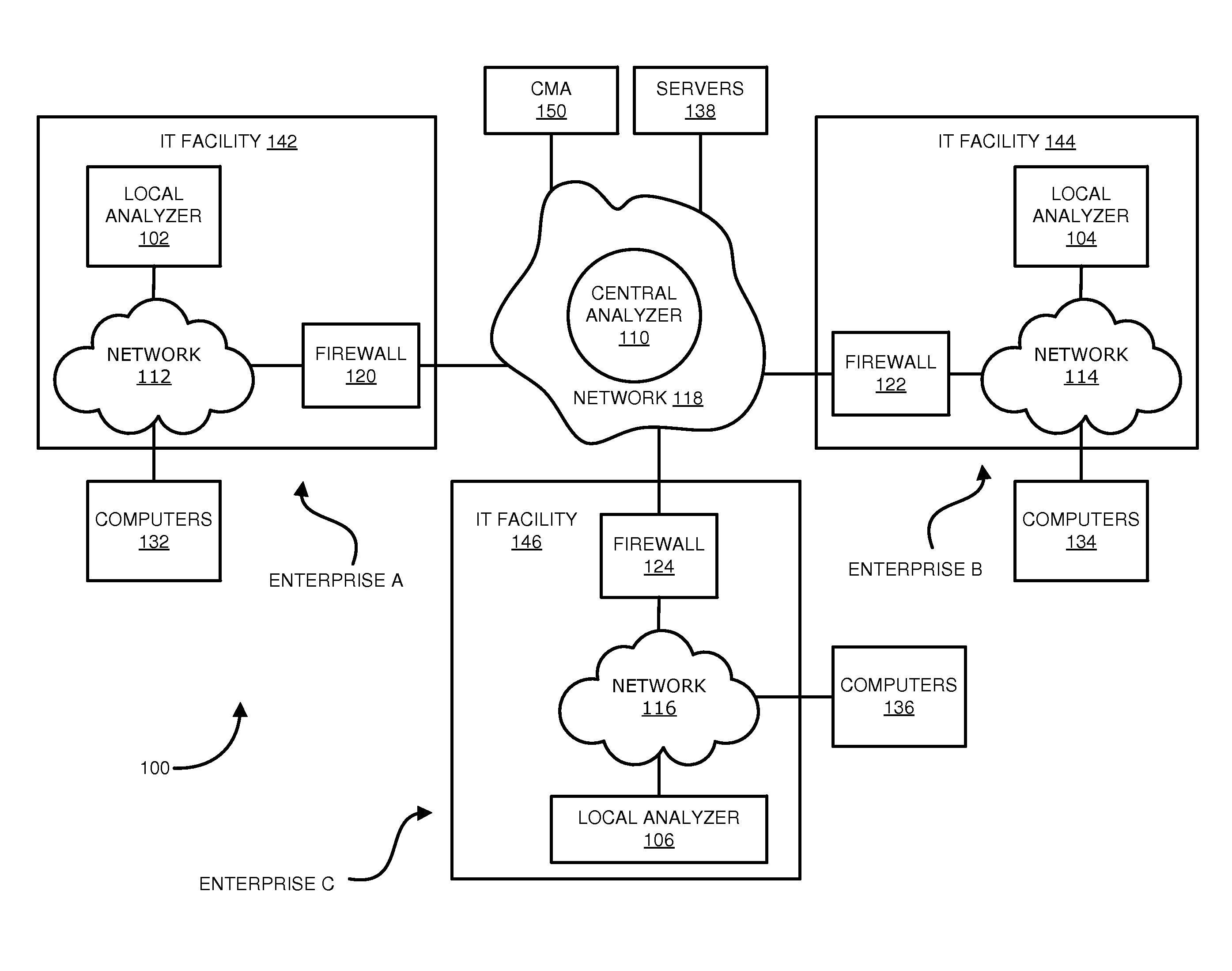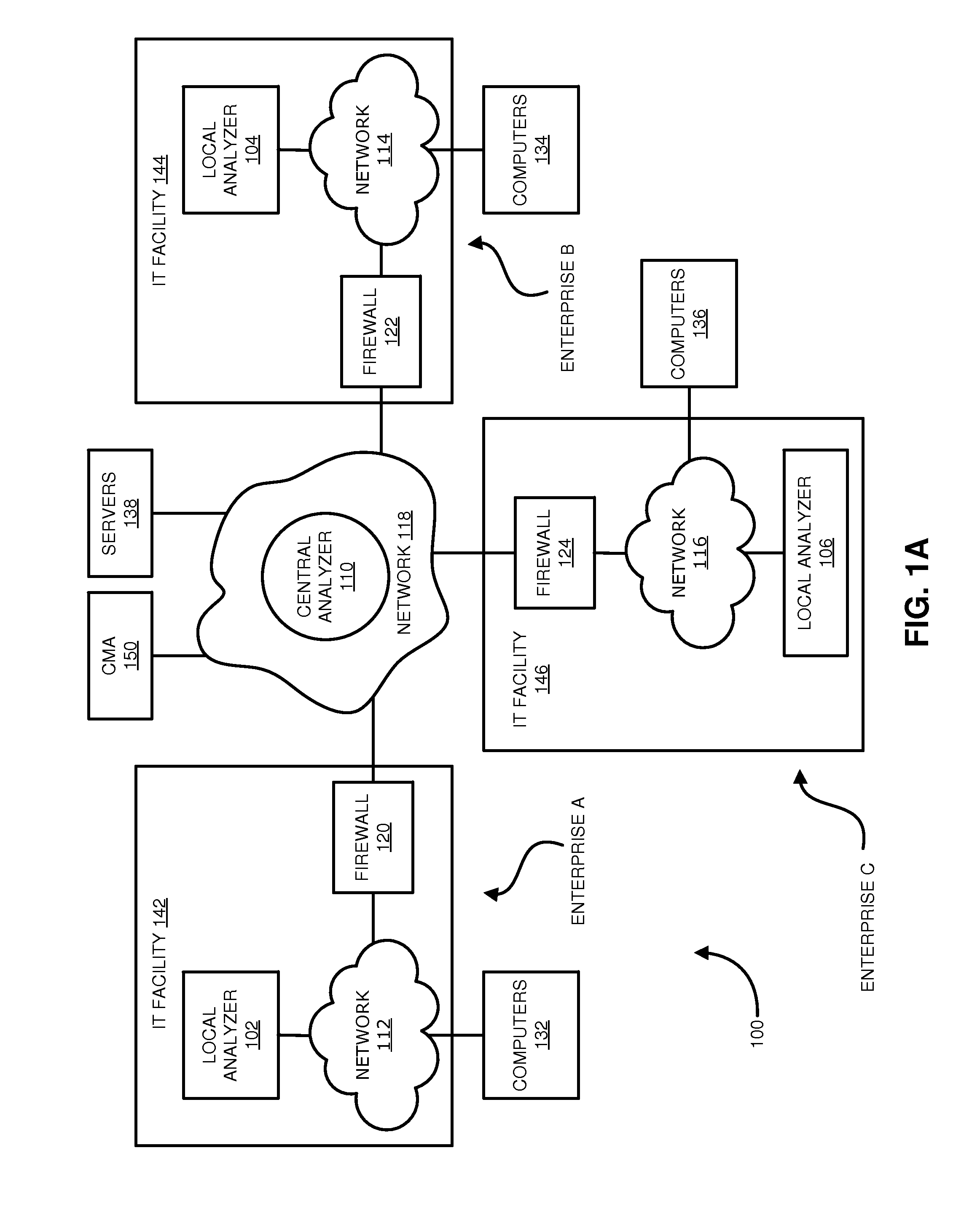Distributed systems and methods for automatically detecting unknown bots and botnets
a botnet and automatic detection technology, applied in the field of network security, can solve problems such as damage to the computer or loss of privacy, malicious content may exist in files contained in computer memory or storage devices, and their function
- Summary
- Abstract
- Description
- Claims
- Application Information
AI Technical Summary
Benefits of technology
Problems solved by technology
Method used
Image
Examples
Embodiment Construction
Introduction
[0026]Generally speaking, a bot is a type of (or part of) an active infiltration attack, often installing or operating in a two-step process. The first step is the initial infection, which may be a typically small package of malicious code (malware) whose function is to compromise the infected device. The second step involves that malware obtaining instructions as to malicious activity it is to perform, including possibly downloading additional malware, e.g., over the Internet or sending messages or data from the infected computer. This second step often involves establishing a CnC channel over which it may send a message providing its status or requesting CnC communications (instructions). This is called a “callback,” and the exchange of such communications may be referred to as callback activity.
[0027]The CnC may use an undocumented entry point, or subvert and use a documented entry point to request instructions over a CnC channel, which are often transmitted over the ...
PUM
 Login to View More
Login to View More Abstract
Description
Claims
Application Information
 Login to View More
Login to View More - R&D
- Intellectual Property
- Life Sciences
- Materials
- Tech Scout
- Unparalleled Data Quality
- Higher Quality Content
- 60% Fewer Hallucinations
Browse by: Latest US Patents, China's latest patents, Technical Efficacy Thesaurus, Application Domain, Technology Topic, Popular Technical Reports.
© 2025 PatSnap. All rights reserved.Legal|Privacy policy|Modern Slavery Act Transparency Statement|Sitemap|About US| Contact US: help@patsnap.com



